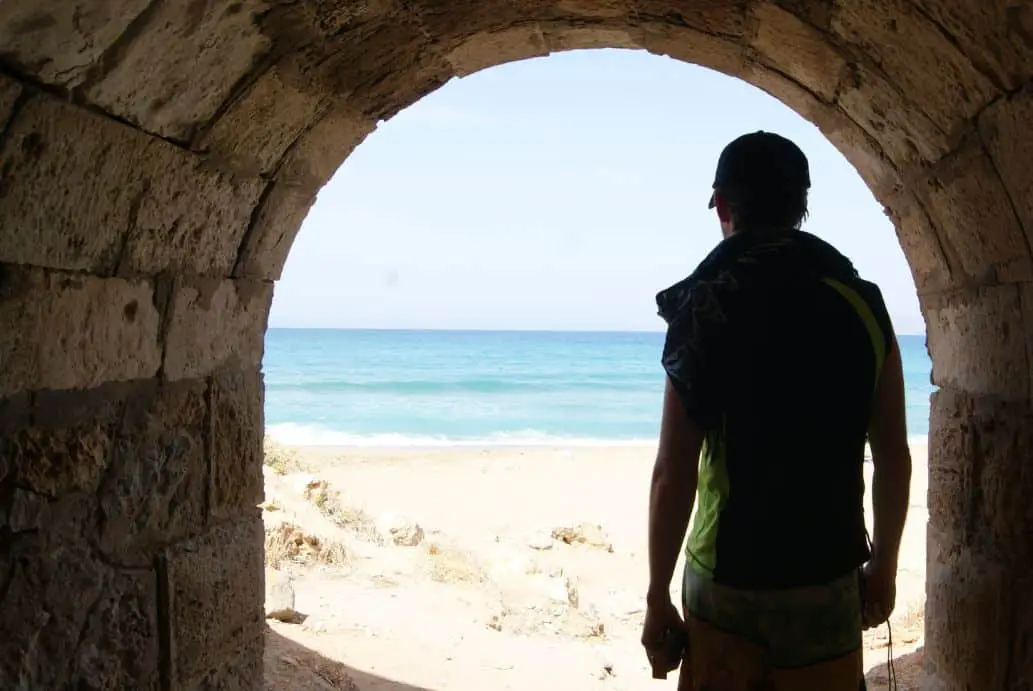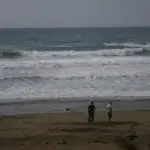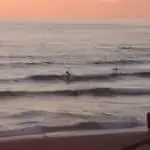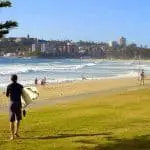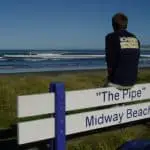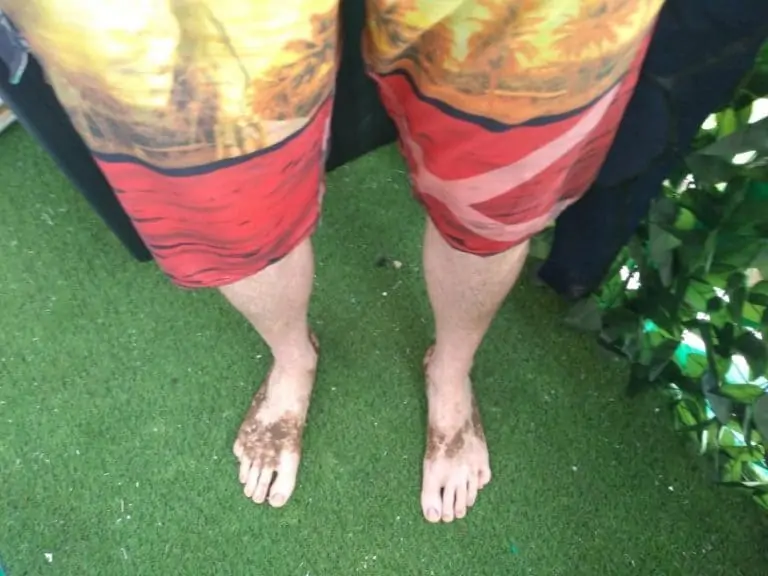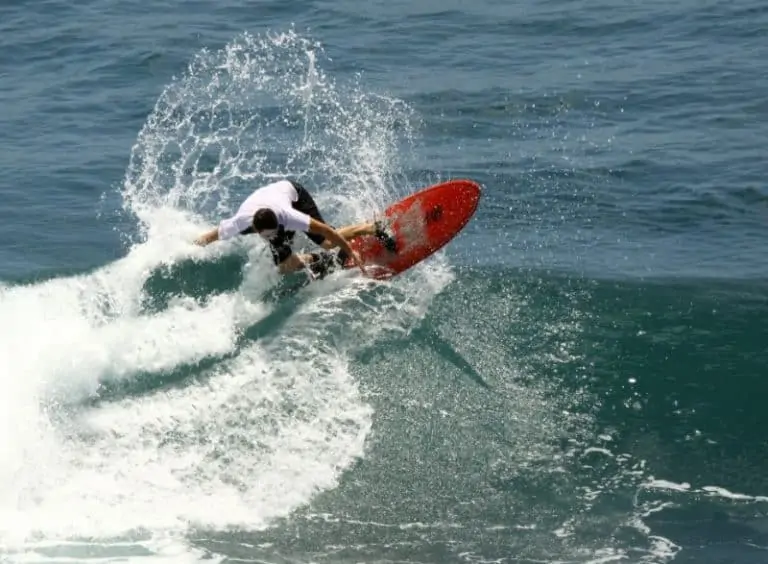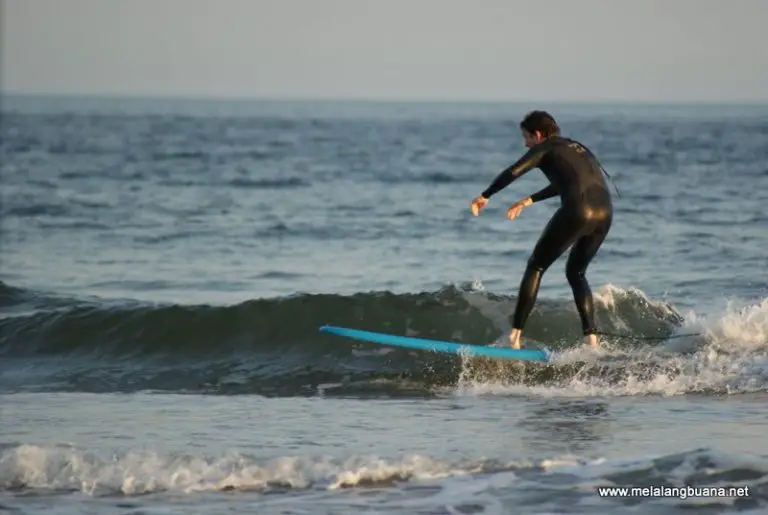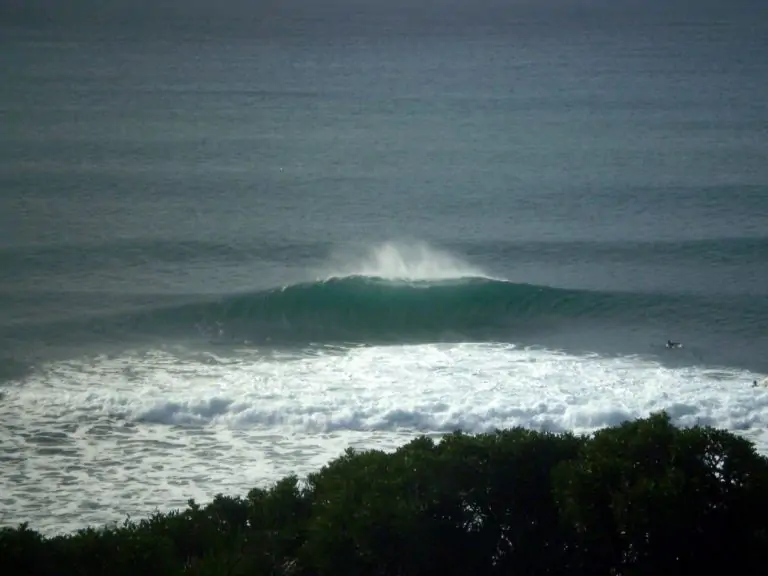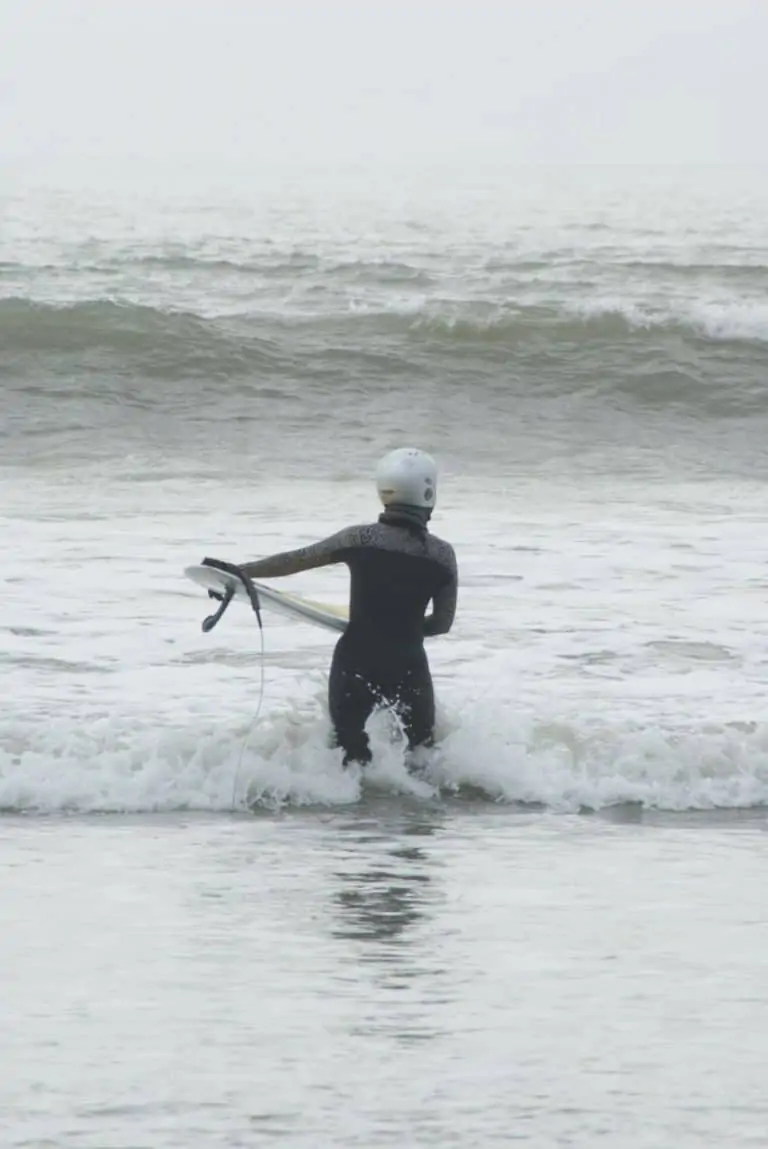How Do You Know When to Go Surfing?
Starting surfing means lots of things to try and figure out, and one of the most confusing is actually knowing when the right time to go surfing is going to be.
This is because you have things like tides, winds, crowds, and of course, waves and swell to all factor in, as well as the choice of board you take, and so much more.
However, it does get easier with time, and I’ll explain in this guide, how you can speed up the process and become an expert on your local spots pretty quickly.
To get started, how do you know when to go surfing? Check local webcams and pay close attention to your local conditions. Check the surf reports and look for spots with lots of learners and surf schools. Use sites like Surfline and WannaSurf for guides on the right tides.
If you don’t have many local webcams, check for photos on Instagram, or any other websites where you can see what the conditions are like today or yesterday.
Look at the surf charts, get a general idea and then check surf websites for when the best time to go is, and you should be good from there. You also need some trial and error because it won’t be perfect the first time.
But I’ll explain more in this post below how you can start on this journey of getting the right conditions for your local spots and learning to surf in the right ways for you.
Let’s get started.
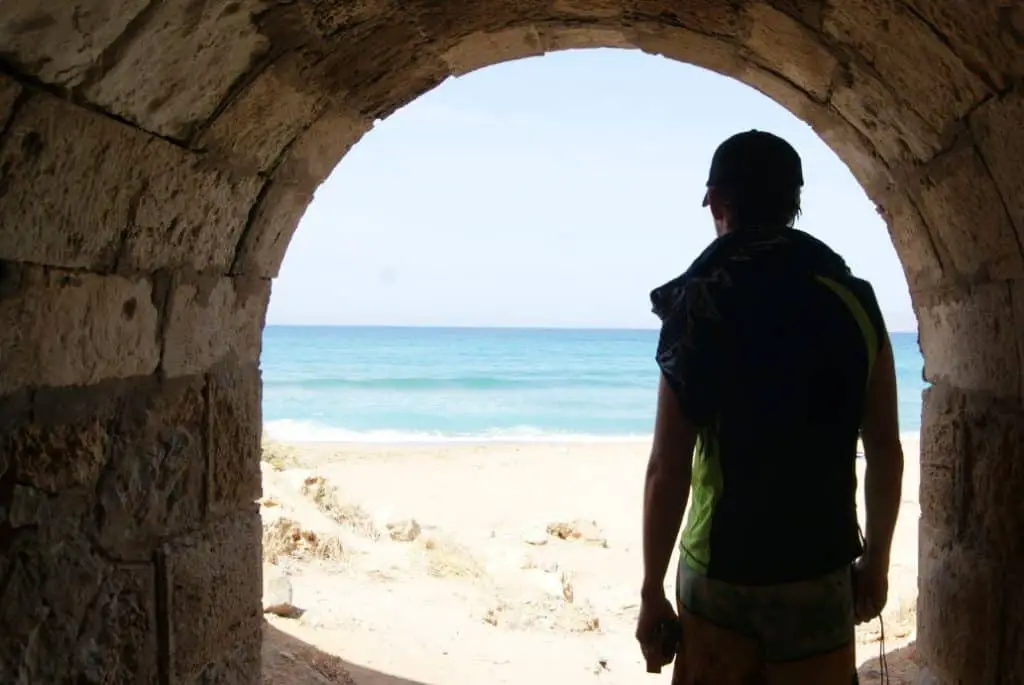
How Do You Know If The Surf Will Be Good?
It gets easier with time, but in the early days, the best thing is to look for a webcam and watch it closely, and look for other people because a crowd is a good indicator of good surf. For learners, however, you don’t want big waves or big crowds.
If there’s crowds, it means the waves are good, but you might want to go to a different spot where the waves are a little bit smaller, or there’s a bit more space to learn to surf more quickly and safely.
Websites like Surfline and MagicSeaweed, or even CoastalWatch in Australia, all have lots of good live webcams. As soon as you find one, bookmark it in your web browser and use it regularly.
You’ll start to learn how to read the waves at that spot, and you’ll become more and more accustomed to it, and you’ll start to fine tune your skills.
You probably won’t need to pay for any webcams because, although Surfline has a premium service with unlimited surf webcams, for example, you can see clips of webcams for free and also on other websites, so it’s probably not something you really need.
What to do if you don’t have any surf webcams for your local spot?
If you can’t find any surf webcams, then the next best thing is to try and find some eyeball surf reports that people might post on websites, or they might put them on Instagram, Twitter, and any other social media sites like that.
You’ll find that some surf schools will post regular updates to try and get people to go down to the beach. If you start to search and find out the names of local surf schools, or shops, or stores, then they might have some regular updates and give you an idea as well.
A point to note about Instagram is that you don’t always know exactly when the photo was taken. Even if they say it was today and they upload that same day, you’re never a 100% sure.
But it can still be a good way of searching by looking through hashtags on Instagram, or searching by location for your local spot as well.
In terms of websites with good surf images, Magic Seaweed is a good one because it also puts the size of the waves according to their report on that day below, so you can still look for old images and find them there as well. Magic Seaweed also has some webcams, so that’s worth a look too.
Check The Forecast And The Wave Size On Good Surf Websites
As well as webcam, the surf websites all have forecasts for wave heights and sizes. To start off, this can be a little bit confusing and you will see things like ‘X ft @ Ys’, meaning waves at X feet with a period of Y seconds.
The period is the interval between the waves in seconds, as recorded by a wave buoy out at sea and presented as an average time interval over a minute or more. The bigger the wave period is, the bigger the waves will be on an exponential scale.
Now, that will take some time for you to get used to because the periods in different parts of the world, they’re all a little bit different, but it’s a good thing to note. And start taking a note of it as you go along.
Something I like about Magic Seaweed is they actually give it a rating and they give an estimated actual wave height because a surf report reading of 5 feet at 15 seconds might produce waves at the beach that actually have 10 feet faces, so double the size it might look like from the report.
It’s really hard to know, and it depends on your local conditions, but this is again, something you need to learn over time. And just pay attention to and start taking notes as you go.
Another website I like but it’s perhaps a little bit more technical, is WindGuru.
And if you Google Windguru for your local spot, then you will see if they have a surf forecast because they should have a wind forecast for everywhere, as the name would suggest, but they don’t always give the wave height.
The only thing about Windguru is, it just gives you numbers and periods. So it’s another nice website and tool to have, but it takes it a little bit more time to learn, and it’s a little bit more technical.
Whereas Magic Seaweed and Surfline are that much easier and more user-friendly to get started with, with WindGuru as a third option for a slightly more technical but still great surf report.
Surf Forecasting Apps On Your Phone
You can also get apps from the websites I’ve mentioned above, as well as others in your area for surf forecasting and reporting.
Generally, the surf forecasting apps are quite limited unless they are paid for, but have a look. I wouldn’t recommend the Windguru app because the website is fine on a mobile, whereas Magic Seaweed and Surfline, you can have a look at the apps.
Magic Seaweed does have a free app with premium options so you can check that out while Surfline has limited free options.
Trial And Error
Surfers have a phrase that goes “to get skunked”. And that actually means when you make a trip to the beach and the waves are terrible, and not what you were expecting. This happens to the best of us, but it is one of the best ways of learning when the right conditions will be.
In the early days of trying to predict the surf, I got skunked many, many times and had to do a walk of shame back home just because the waves were flat, and I got it completely wrong!
It is a bit of an art and it does get easier over time, but do expect to have a lot of trial and error.
Now, if you live far from the ocean, then you could try phoning a local surf store before you go to see if they can tell if the waves are good for learning. But again, there’s always going to be that element that the waves aren’t as you expect.
So don’t ever get too excited until you’re there because no matter how good the surf might look on a webcam or on a photo, things can change quickly in the ocean, tides can ruin things, winds can come up.
So you really need to think about all of those factors too, and just be prepared to get skunked now and then. Expect the waves not to be as good as you think, and if they are, then that will be a bonus.
What Is Wave Period On Surf Forecasts?
The wave period is the interval between waves. And for surfing the bigger, the seconds in the wave period, the better the waves will be.
This means the quality of the waves will be better because they’ve traveled from further away and it’s called a groundswell if it’s a big period. However, you don’t need a big period often to surf fun, small waves.
That’s just for bigger waves that you want a bigger period. But if you look at your local forecast, you start to get an idea of what the range for the period is when it’s good.
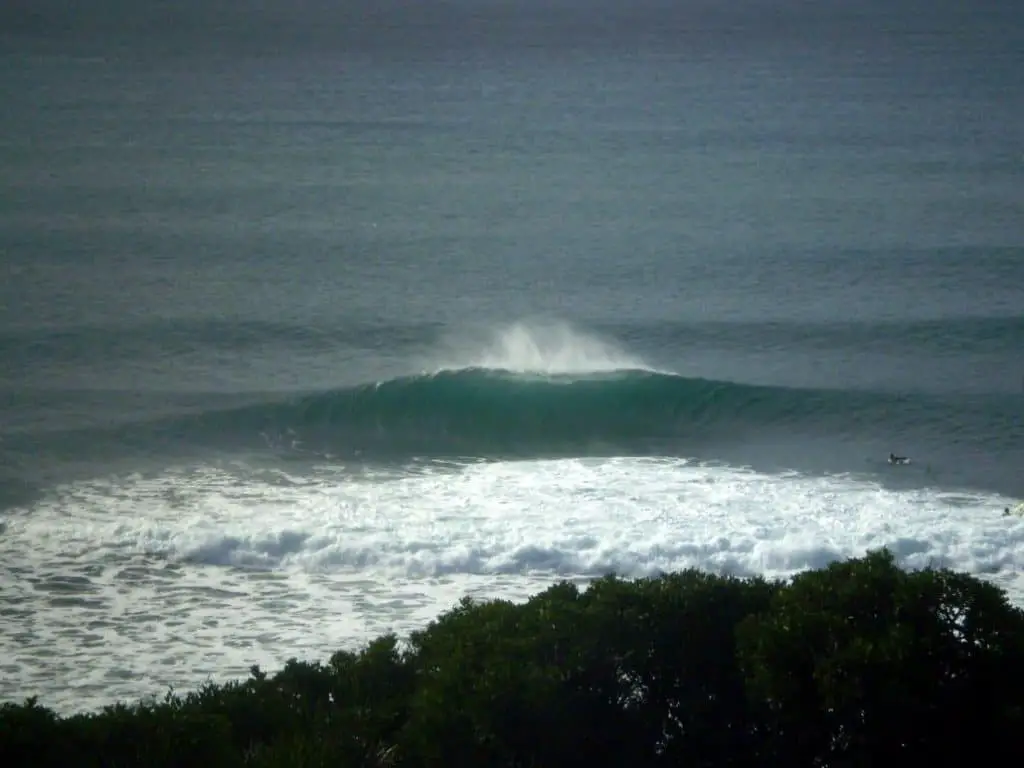
And if the period’s really small, and even though there’s maybe 10 feet of swell, the waves might be quite small as well, because that’s an indication of low quality, windswell type waves.
Again, these are things you need to take notes of over time.
In fact, I’ve actually published a notebook you can check out on Amazon to help you with this, the Surf Session Diary, and go and have a look at that so you can start writing them down.
It’s a blank journal/notebook approach rather than on the phone, just to keep things simple, so you don’t really have to have your phone on you all the time when you’re at the beach, if it’s not safe to leave it in your car, or whatever.
And you can take a diary of your session as well, so you know how big the waves were. Check that out if you think it’ll be useful.
Getting the Wind Right When You Go Surfing
Another key factor is looking at the wind because it’s a huge determinant of how good the waves will be when you get to the beach. Generally speaking, you don’t want strong winds in any direction.
And Windguru is a good website for this because it shows really dark and bright colors for stronger winds so you can see it very clearly.
However, offshore winds, which come from the land out to sea are generally a good thing as well. But again, if they’re really strong, they can make it a bit more difficult.
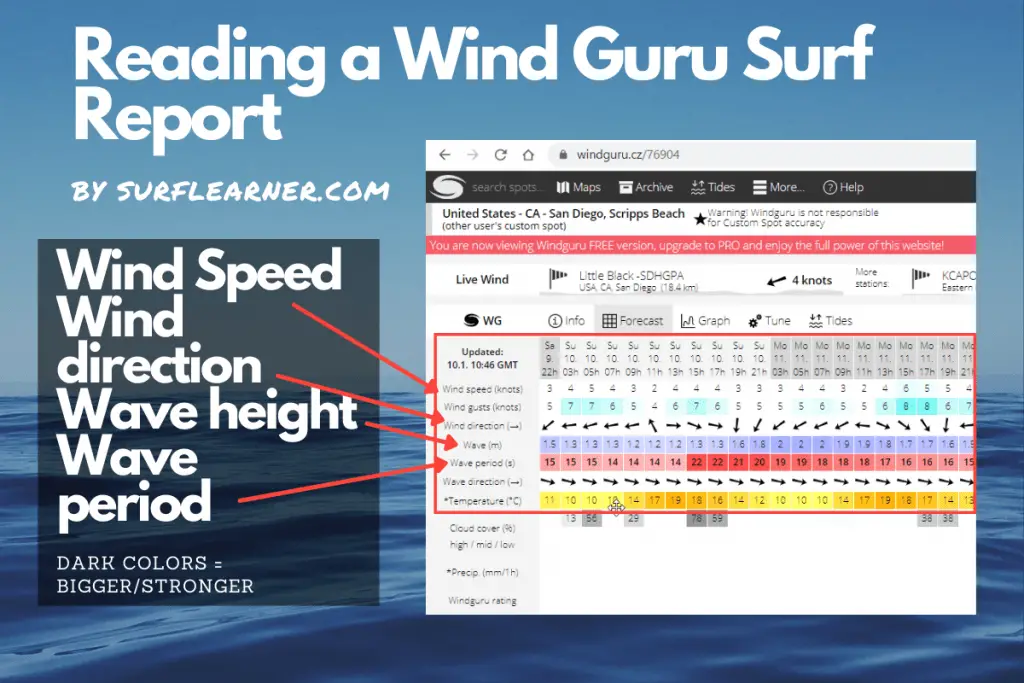
You will also learn that some of your local spots are protected from winds, perhaps their waves break behind a headland on high tide, and the wind kind of doesn’t get over the headland, and that’s where the protection comes from.
But these are the things you have to learn for your local spots. A good surf guide, like the Stormrider Surf Guide from Amazon is one that I’ve got and recommend because will tell you all of these factors and a lot more!

You can get the Stormrider Guide in a book or in Kindle format. I’d recommend the book though, because it’s a really nice one to have and to flick through, and start reading about all the spots and how they break.
As a general point, wind is usually the lightest first thing in the morning and last thing in the evening, just because the way the climates work, it’s not always true, but that is often the case.
And that makes early morning very good for surfing. Now, if you want to check out my post on when is the best time in the day to surf, do that now!
And always try and get up early in the morning and go for the dawn patrol when you go surfing, to get more waves.
Tides And The Right Time To Surf
Another massive factor in the right time for going surfing is actually looking at the tides because a spot that’s really good on a low tide, might actually be completely flat or terrible on a high tide, and vice versa.
Again, a good guide like The Stormrider is really helpful here, but it does help to know your spots. And this is often something that comes with trial and error.
Now, I’ve got a dedicated post on the best tide to go surfing as well, for you to check out. But mainly, you want to go in between the extremes of high and low tide as I explain in more detail in that post.
Also, low tides have a higher chance of currents, but you can also see exposed rocks at low tide. Also, at other points during the tide. It depends on the spot, but generally speaking, the middle of the tides is best.
And this is again, something you can get from speaking to surf schools, speaking to surf store owners when you’re in there, checking out their gear, just talking to people online, and people will often tell you, especially if you’re learning, because if you’re learning, you just start to have fun.
And lots of surfers will share lots of tips with you when you are at the beach, much more than they will do online!
Keep A Diary Of Your Sessions To Improve
And I’ve mentioned this above, but keeping a surf diary is really helpful because you can write down all the numbers every time you go.
And as I mentioned, I’ve published the simple Surf Session Diary on Amazon to help you with that. It’s a simple template notebook, A5, small enough to carry with you anywhere.
And it just helps you to get that log and build up that knowledge base because everywhere you go is going to be a bit different, but you want to really hone your skills on your local spots, so the best time to go and how to get the most fun.
Whatever you do, it could be keeping a note in your phone, taking photos, just try and keep a diary because there’s lots of factors to remember as you’ve seen above, and it can be really confusing if you try and just store it all in your head.
You can get a general gist just from going and remembering, but it does get harder the more specific you want to get, and the more honed you want to get with your spots.
And if you do that, then you can really start to get very accurate on how you read the surf forecasts and start to predict when the swell is going to be really good.
And you’ll just start to know it instinctively and you can be ahead of the pack, and get more waves and have more fun.
With all of this, then you’re going to be learning to surf the right waves for you on the best days, and have more waves and learn much quicker.
Products Mentioned
- The Stormrider Surf Guide
- There are Stormrider Guide editions for all over the world, but I found the World Stormrider Guide a little bit too general.
- Surf Session Diary
- I published this template logbook/diary on Amazon after I’d been looking for a way to help me remember the different conditions for my local surf spots, but it works for all surfers
- There are various covers/versions available.
Related Question
Is it safe to surf at night? Not really because there’s lots of hidden dangers and if you hurt yourself, no one will see that you’re in trouble, so don’t do it. Yes, surfers do go out for night’s surfs, but it’s not recommended.
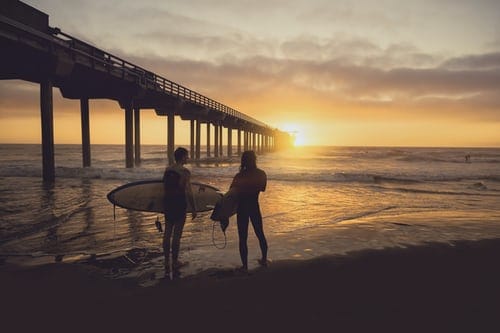
If you live in a sharky area, sharks are much more active at night as well so there’s that added threat. Instead, a better thing would be to go first thing in the morning because the winds will be light, but there will be light, crucially.
If you go out in the dark, you could go on a full moon but again, it’s just really high risk, and I would not recommend it for anyone. Some kamikaze surfers do go, but again, that is their choice. Don’t do it as a learner, even if you want to escape the crowds.
Just go somewhere else to a quieter spot. It’s an extreme option and it’s not something that I’d recommend if you value your safety.
